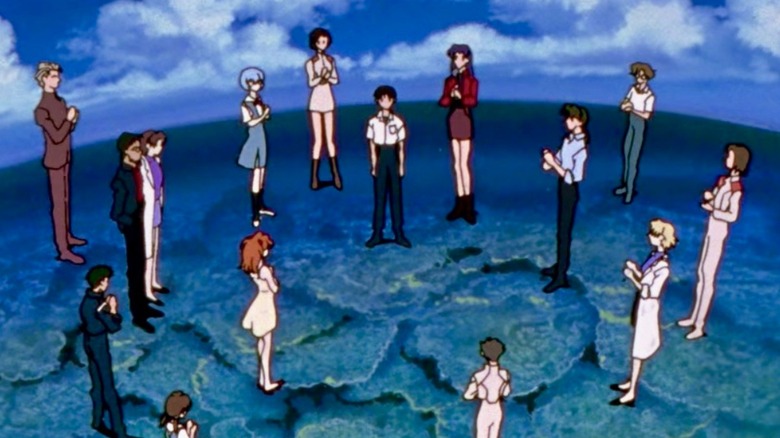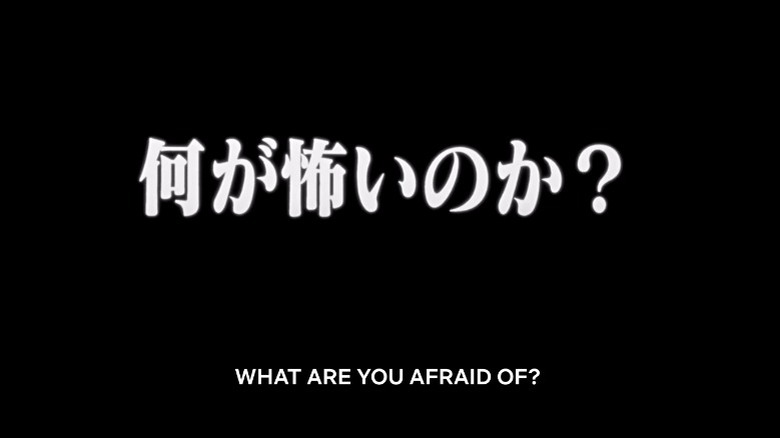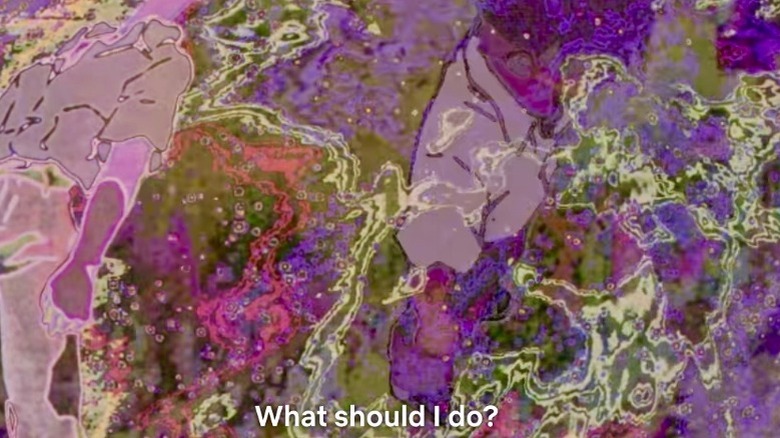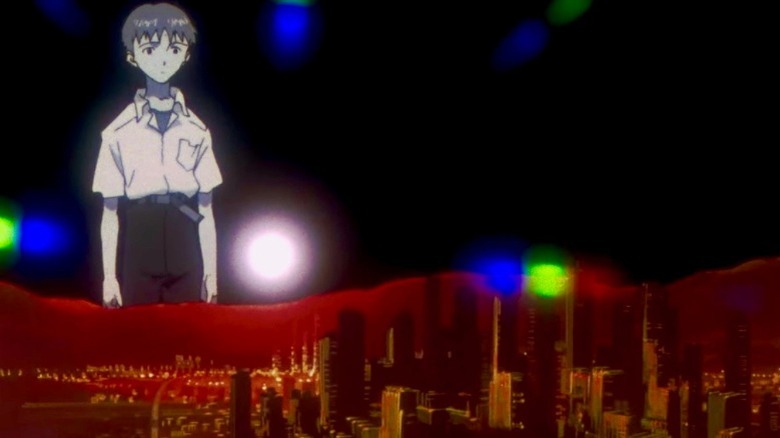Neon Genesis Evangelion Ending Explained: A Dive Into The Subconscious
The end of the world never looked so beautiful. In all its terror and darkness, Hideaki Anno's masterpiece "Neon Genesis Evangelion" has some of the most stunning animation ever put to a screen and its use of montage and dynamic cutting lends itself to many interpretations, most of which reject the notion of an ending. It's not that Anno wanted to necessarily keep the story ambiguous or inconclusive for the sake of it, but as a deeply personal project of his, one informed by the crippling depression he has experienced in his life and the difficulty of his upbringing, he approached this story as one that is ever-evolving and multi-dimensional.
The show's premise is both traditional and unconventional. It's a mecha-anime about a group of children — Shinji Ikari, Asuka Langley, and Rei Ayanami — tasked by the corporation NERV to pilot giant robots called EVAs to protect their city, Tokyo-3, and the world from raiding "Angels." But it is also about the burden that older generations place on the young, and the catastrophic psychological effects of loss it unleashes. In Shinji's case, the torment his father Gendo places on his still-confused and adolescent soul leads Shinji to constantly run away, feel abandoned, and cease to believe that life is worth living. His relationship with his mother, whose spirit may or may not actually reside in the EVA that Shinji is ordered to pilot, is manipulated by Gendo and a shadowy umbrella group called SEELE for undisclosed purposes.
The End of the World - Episode 25
Whatever strings or bare remains of plot that may be left by the time "Neon Genesis Evangelion" gets to its final two episodes are completely abandoned and the show takes a dynamic turn into something truly visionary and surreal. It's revealed that Gendo and SEELE had been working towards the Human Instrumentality Project, a massive pseudo-Biblical undertaking where the souls of humanity are all converged into one single human consciousness. For Shinji, this melding of the conscience is depicted as a series of dream-like vignettes, or a subliminal therapy program that forces Shinji to confront his own reality, his existence, and his place among his friends.
Episode 25, the second to last episode, begins with the title cards that read Raison D'etre – One's Reason for Being – The Case of Shinji Ikari. Scenes of Shinji's life, his memories, his difficult relationship with his mother, and friends like Asuka, Rei, Misato Katsuragi, and Toji Suzuhara are interspersed with title cards that ask direct personal questions, some from other characters and some from an unnamed narrator. It's not a stretch to believe the narrator is Anno himself, who suggested that the final two episodes were a culmination of his own feelings about himself and that he initially didn't believe he needed or wanted drawings and that he preferred to do it with words. For some audiences, the show's depiction of mental illness and traumatic life events are at once terrifying and cold, but also relatable and illuminating.
The End of the Fantasy - Episode 26
Themes of separation, abandonment, and loss are heavy on the sleeve of the series, which is really a psychological drama disguised as an action-packed mecha-anime. The Human Instrumentality Project for Shinji's father Gendo is a means to an end — the reuniting of human souls also means reuniting with his wife (and Shinji's mother) Yui who was killed in the Second Impact, a cataclysmic event that nearly destroyed the whole world and separated humanity. Now, the Instrumentality Project is coinciding with the Third Impact, another Biblical-level apocalypse, but one which shapes humanity back into one.
Episode 26 is a reckoning with Shinji's chosen path and in turn, it describes the ways in which a story and its ending have superficial meaning in the context of real life. The episode spends most of its time creating a completely new reality for Shinji, where he is no longer a tormented child forced to pilot an EVA, but just a regular school kid. He has a loving mother and father, he has cool friends, and his life is just like any other. Anno abruptly and confrontationally creates the separation of his art and real life by posing prompts to the audience directly. There's more to life than fantasies — go live them!
It's Only The End If You Let It Be
As an artists evolve in their ethos and their perceptions of art and the world, the reflections can be seen in the characters and philosophies depicted in their work. For "Neon Genesis Evangelion," the Human Instrumentality Project was but one possible conclusion to multiple realities. Evangelion has spurned several endings — one in the show, one in a separate movie "End of Evangelion," and even a third in the "Rebuild" movie series with the final film "Evangelion 3.0+1.0 Thrice Upon a Time," all with different conclusions, or faux-conclusions to the story.
These various storylines are in line with different parts of Anno's life. As a creator, Hideaki Anno has mentioned in numerous interviews that the show is his life and thus, as his life continues, the show does too. It breaks the idea that "Neon Genesis Evangelion" is finite story or even a story worth wanting a bow tied around it. The brilliance of "Evangelion" is how it is an ever-evolving mythos by Anno, with us as infrequent visitors into its crazy world and its creator's complex mind.



